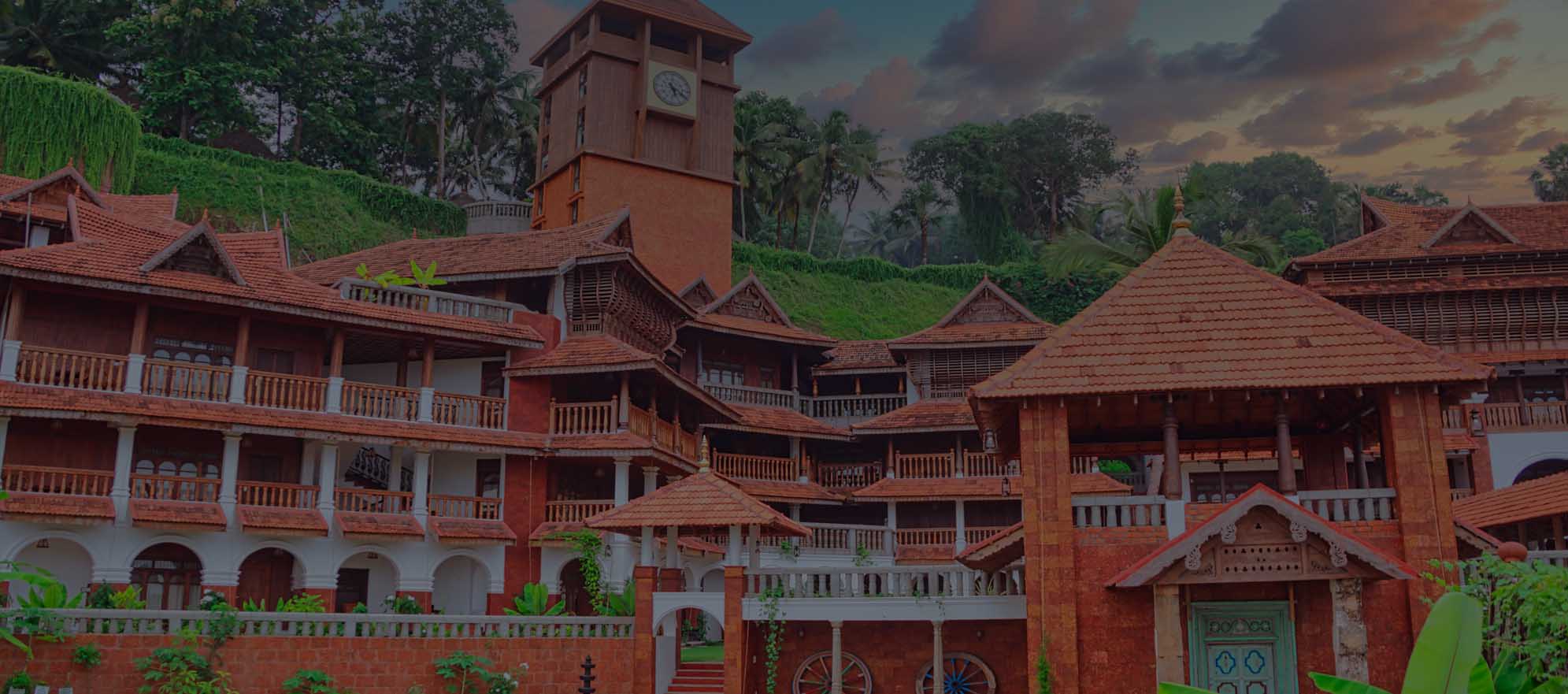

ESCAPE TO SOMATHEERAM AYURVEDA VILLAGE IN KERALA
At lunch, a Chinese lady sits with a bright red face pack, fabric wound around her head like bandages, dressed in a green robe, sipping fresh pineapple juice. Nearby, a Russian gentleman strolls among the gardens with banana, egg white, and mango painted on his face—having just received a Thalapothichil treatment, where herbal paste is applied to the head and topped with a lotus leaf, said to be excellent for relieving depression and stress.
Welcome to Somatheeram Ayurveda Village—India’s first Ayurvedic hospital in a resort setting. Launched 35 years ago, it boasts more awards than one could count. Set in Thiruvananthapuram, Kerala, the resort perches above an endless golden beach, where fishermen untangle nets that seem to stretch to the Himalayas.
The luxury at Somatheeram does not come from opulent accommodations—the cottages and rooms are simple, though surrounded by must-have antiques, stone goddesses, and ancient cauldrons once used for mixing Ayurvedic remedies. Instead, the true luxury is found in its top-tier hospital, guided by fifteen Ayurvedic doctors (including my superb doctor, Dr. K. Chandrasekharan Nair) and seventy-one experienced therapists all working in a lush, welcoming retreat.
For those who desire Ayurveda with vibrancy, not just serene treatments—Somatheeram is ideal. It welcomes both those seeking deep relaxation and those looking for a family-friendly, active wellness experience. Unlike some traditional approaches, here guests can enjoy activity and fresh air—even as they embark on therapies.
The resort is set atop a green hill filled with coconut palms, whose sweet fruits serve as post-treatment drinks. Whether you take the wheelchair ramp or tackle sixty steps from your cottage up to the therapy center, the route meanders through fifteen acres of gardens filled with medicinal herbs, mangoes, jackfruit, tamarind trees, and ocean breezes. The sounds of beachside hymns and birds mix seamlessly into the air.
Therapists at the Ayurvedic hospital wear hairnets and masks for hygiene, not beauty. Medical officer Dr. Reshma Venu leads me to a consultation room and an impressively detailed 17-page booklet covering everything from eating habits to stress sources and personality traits. All of this helps doctors identify your dosha—body type—using observation, pulse, and behavior.
The chief medical doctor, Dr. K. Chandrasekharan Nair—age 71, with fifty years’ experience—explains Ayurveda: the science of life. All living and non-living things contain air, space, water, fire, and earth, which manifest in the body as Vatha, Pitha, and Kapha—the three energetic principles. Vatha governs movement, Pitha handles digestion and temperature, and Kapha is responsible for growth, immunity, and structure; your constitution never truly changes. After a careful consultation, he prescribes a personalized plan to balance your doshas.
Somatheeram offers numerous treatments: Abhyangam, a synchronised medicated oil massage; Kizhi pouch massage for pain; Kativasthi for spinal tension; Pizhichil medicated oil baths; Sirovasthy for mental relaxation; Karnapooram, ear fumigation; Akshitarpanam, eye therapies—and many more.
My personal favorite? The foot massage: lying on the floor while therapist Prasanna expertly balances on a rope and massages using her feet. The dry powder massage scrubs away tension and cellulite, while Shirodhara—warm oil hypnotically dribbled on the forehead—sends me to bliss. One could easily spend months here in full wellness mode, but most guests stay a week or more, reaping benefits.
Accommodations include 80 traditional Keralan cottages and rooms—built of mud and brick, topped with thatch, and cooled by fans (air conditioning is only lightly recommended during therapies). The swimming pool overlooks the Arabian Sea. Evenings feature live Kathakali dance and sitar music. Yoga halls open to the ocean, where daily group meditation and excellent classes led by inspiring instructors are held.
For retail therapy, three shops offer jewelry, pashminas, and Ayurvedic remedies. Meals are fresh, organic, and designed for your dosha—buffets for every meal, with dishes marked for dietary compatibility. The Ayurveda dietician is available for custom guidance, and meals range from Indian classics to vegetable soups and herbal teas.
With no alcohol or tobacco allowed (save for a few Italians stealthily smoking near the gate), guests embrace true wellness—sometimes wandering about with egg white and sandalwood powder on their faces in pursuit of holistic health.